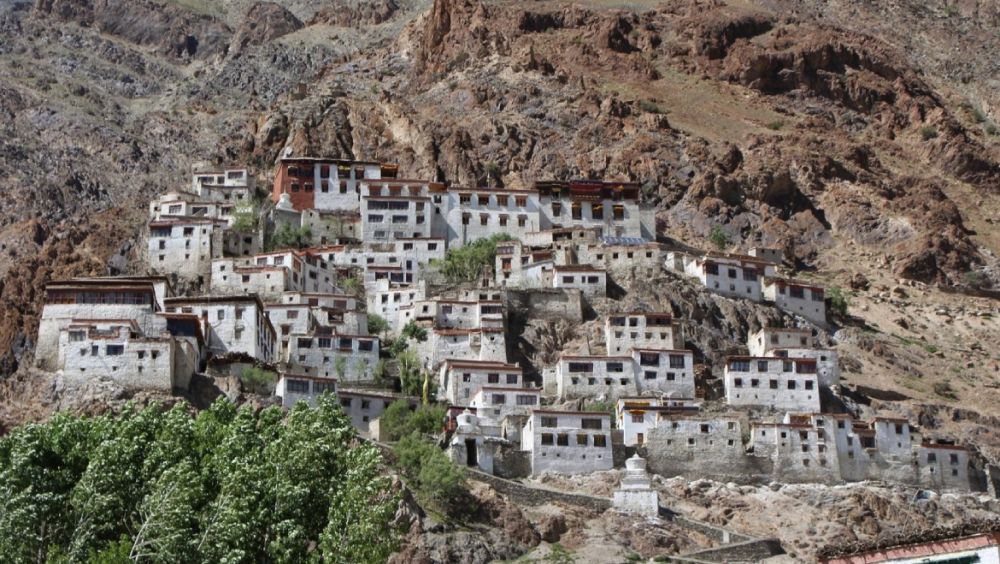

Nestled in the remote Zanskar Valley of Ladakh, India, lies the largest and most important monastery in the region: Karsha Monastery. Founded in the 10th century, this Buddhist monastery has served as a spiritual center for over a thousand years, offering insight into the region's rich cultural and religious heritage.
Karsha Monastery, also known as Karsha Gompa, is believed to have been established by the famous translator, Phagspa Shesrab. Over the centuries, it played a significant role in the diffusion of Buddhism in the Himalayas. The main temple houses ancient murals and thangkas that date back to the time of its establishment, as well as the mummified body of a revered monk, making it not only a religious site but also a historical repository.
Tourism in Karsha and the Zanskar region began to gain traction in the late 20th century as adventurers and spiritual seekers alike started to explore the remote corners of the Indian Himalayas. The arduous trek to the valley was a rite of passage for many, with the rewards of breathtaking landscapes and cultural authenticity drawing in a modest but dedicated number of tourists each year.
Today, Karsha Monastery stands as a testament to the resilience of Tibetan Buddhist culture amidst a rapidly changing world. The monastery's annual Karsha Gustor Festival, a traditional monastic festival that features the sacred Cham dances, mask performances, and rituals, has become a significant draw for tourists looking for an immersive cultural experience.
Responsible Tourism: The latest trend in tourism in Karsha revolves around the principles of sustainability and responsible tourism. With the fragile ecology of the region, efforts are being made to minimize the environmental impact of tourism, promoting eco-friendly practices and community engagement.
Homestays: The homestay movement has gained momentum in Zanskar, with many visitors preferring to stay with local families in their homes. This provides tourists with an authentic experience of the local culture and traditions, and it contributes directly to the local economy.
Digital Detox: With limited connectivity in the region, Karsha has become a popular destination for those seeking a digital detox. Visitors embrace the opportunity to disconnect from their gadgets and reconnect with nature and spirituality.
Accessibility Improvements: Infrastructure development, including the construction of roads and improved air connectivity, is slowly making Karsha more accessible, which may lead to an increase in tourist numbers in the coming years.
In conclusion, Karsha Monastery continues to captivate travelers with its ancient heritage, awe-inspiring landscapes, and the profound tranquility of monastic life. For those looking to explore the depths of Buddhist culture and the untouched beauty of the Himalayas, Karsha remains a timeless destination.